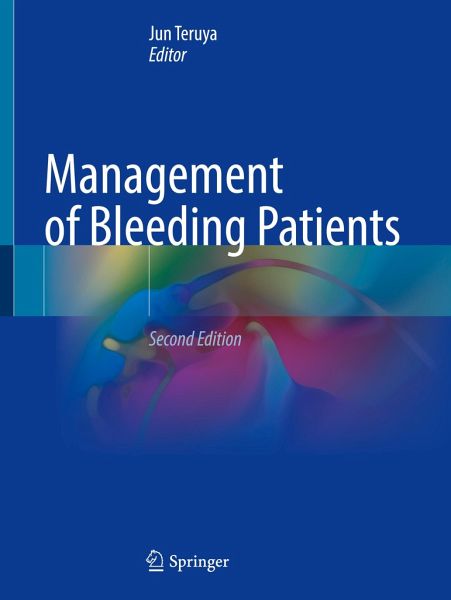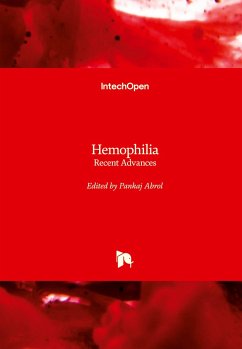
Management of Bleeding Patients

PAYBACK Punkte
53 °P sammeln!
Hemostasis Basics: Figures and Facts.- Screening Coagulation Assays, FXIII and D-dimer.- Platelets.- Von Willebrand Disease Laboratory Workup.- Hyperfibrinolysis.- Whole Blood Assay: Thromboelastometry - Basics.- Whole Blood Assay: Thromboelastometry - Bleeding Management Algorithms.- Known Bleeding Disorders for Surgery.- Hemophilia A, Hemophilia B, Congenital von Willebrand Disease, and Acquired von Willebrand Syndrome.- Bleeding Associated with Coagulation Factor Inhibitors.- Bleeding Due to Rare Coagulation Factor Deficiencies.- Pregnancy-Associated Bleeding.- Bleeding Associated with Thro...
Hemostasis Basics: Figures and Facts.- Screening Coagulation Assays, FXIII and D-dimer.- Platelets.- Von Willebrand Disease Laboratory Workup.- Hyperfibrinolysis.- Whole Blood Assay: Thromboelastometry - Basics.- Whole Blood Assay: Thromboelastometry - Bleeding Management Algorithms.- Known Bleeding Disorders for Surgery.- Hemophilia A, Hemophilia B, Congenital von Willebrand Disease, and Acquired von Willebrand Syndrome.- Bleeding Associated with Coagulation Factor Inhibitors.- Bleeding Due to Rare Coagulation Factor Deficiencies.- Pregnancy-Associated Bleeding.- Bleeding Associated with Thrombocytopenia.- Bleeding in Acute and Chronic Liver Disease.- Bleeding and Hyperfibrinolysis.- Bleeding of Unknown Etiology.- Bleeding Associated with Disseminated Intravascular Coagulation.- Bleeding and Vitamin K Deficiency.- Bleeding in Uremia.- Bleeding Associated with Connective Tissue Disorder.- Bleeding Associated with Trauma.- Massive Transfusion Protocol.- Lupus Anticoagulant Hypoprothrombinemia Syndrome (LAHPS).- BLEEDING FROM SPECIFIC ORGANS.- Intracerebral Hemorrhage: An Overview of Etiology, Pathophysiology, Clinical Presentation, and Advanced Treatment Strategies.- Epistaxis.- Bleeding Disorders Related to Lung Disease.- Heavy Menstrual Bleeding.- Gross Hematuria.- Upper Gastrointestinal Bleeding.- BLEEDING ASSOCIATED WITH MEDICATION.- Antiplatelet and Anticoagulant Agents.- Thrombolytic Therapy: tPA-Induced Bleeding.- Bleeding Associated with ECMO.- Management of Bleeding Associated with Durable Mechanical Circulatory Support.- Bleeding Related to Cardiac Surgery.- Bleeding Related to Liver Transplant.- Percutaneous Image-Guided Interventions Including Solid Organ Biopsies.- Dental Extractions in Patients with Congenital and Acquired Bleeding Disorders.- NeonatalThrombocytopenia.- Bleeding in the Neonate.- Evaluation of Bleeding Risk Prior to Pediatric Invasive Procedures.- Evaluation of Bleeding Risk Prior to Invasive Procedures.- Hemostatic Agents and Blood Components Used to Stop Bleeding.- Blood Components.












